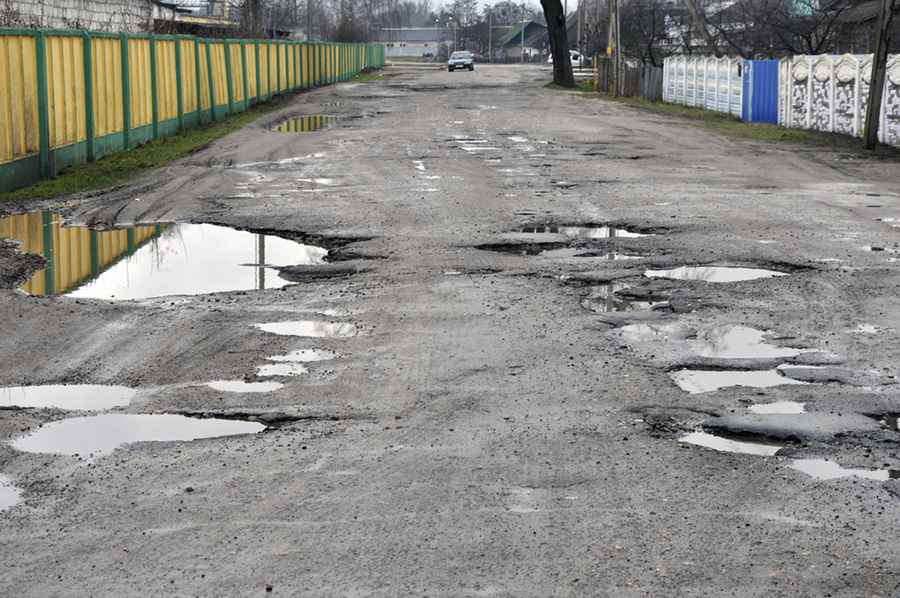The Impact of Poor Road Conditions on Vehicle Safety
Poor road conditions are more than just nuisances; they are a severe concern for motorists that can lead to hazards on the road, compromising vehicle safety and performance. Drivers face risks on the road every day, but when roadways are not properly maintained, those risks multiply, leading to increased accidents and vehicle wear and tear.

Crumbling Pavement
Road surfaces break down over time due to traffic, weather, and a lack of maintenance. This deterioration can result in crumbling pavement, which affects the vehicle's traction and can cause damage to tires and the undercarriage. For motorcycles, the risks are even greater, as a two-wheeled vehicle is less stable and more susceptible to falling due to irregular surfaces.
Potholes
Potholes form when water expands and contracts in cracks in the road. Striking a pothole can be like hitting a solid object at high speed, which can jolt the steering system out of alignment, bend or crack rims, and damage tires. Potholes can also pose significant danger by causing drivers to swerve unexpectedly to avoid them, potentially leading to accidents.
Uneven Surfaces
Surfaces that are uneven can lead to vehicle instability and unexpected vehicle behavior. Uneven road surfaces, including heaves or dips, can cause drivers to lose control, especially in wet or slick conditions, increasing the risk of skidding or hydroplaning.
Inadequate Signage and Road Markings
Signs and markings are critical for safe navigation. When this signage is missing, faded, or obscured, it can lead to confusion, missed turns, and even accidents as drivers may not be adequately warned about upcoming changes in road conditions, such as sharp bends, intersections, or pedestrian crossings.
The Domino Effect on Vehicle Safety
Poor road conditions can lead to a domino effect of vehicle problems. Damage is not always immediate or apparent; it can develop over time, compromising safety on multiple levels:
- Suspension and Steering: Hitting potholes or uneven roads can damage the steering and suspension systems, leading to decreased handling and control.
- Tire Damage: Tires can be punctured, slashed, or have their sidewalls damaged, which may not cause immediate failure but can lead to blowouts later.
- Wheel Alignment: Frequent driving on bad roads can lead to misalignment, which then causes uneven tire wear and poor handling.
- Exhaust Systems: The undercarriage of your car might take the brunt of the impact from poor road conditions, causing damage to exhaust systems, which can be expensive to repair.
The Role of Reporting and Advocacy
Reporting hazards is a civic responsibility that can prevent accidents and damage. Most local governments have a system in place to report issues such as potholes, faded road markings, or fallen signage. For example, you can find the California Division of Maintenance report here. Quick reporting ensures that the authorities are aware and can take action to repair and prevent further deterioration or injury. It also helps document the problem, which can be crucial in liability cases related to road condition accidents.
Advocacy for better infrastructure is also essential. Infrastructure improvements can only happen with sufficient funding and prioritization by local and national governments. Motorists, local businesses, and community leaders can band together to push for these necessary improvements, attending public meetings, reaching out to elected officials, and participating in forums where infrastructure planning is discussed.
Safety Tips for Driving in Poor Road Conditions
The Los Angeles lemon lawyers at Young & Young APC do not recommend driving in poor road conditions if you are already experiencing vehicle issues. However, they’ve provide you with a list of safety tips in case you absolutely must drive:
- Drive at Lower Speeds: Slowing down allows more time to react to road hazards.
- Increase Following Distance: More room allows for safer maneuvering if there’s a need to evade a road defect.
- Stay Vigilant: Keep an eye out for road damage and adjust your driving accordingly.
- Use Road Hazard Reporting Services: Many areas have apps or websites to report and view updates on road conditions.
The impact of poor road conditions on vehicle safety is a critical issue that affects all drivers. While individual care and attentiveness can mitigate some risks, the ultimate solution lies in comprehensive road maintenance and improvements. Reporting problems and advocating for infrastructure investment are vital steps in creating safer roads. For those who have experienced vehicle damage due to these conditions, understanding and invoking Lemon Law provisions may provide some relief. As community members and drivers, everyone has a stake in improving the roads they travel on every day.
Image credit: Depositphotos